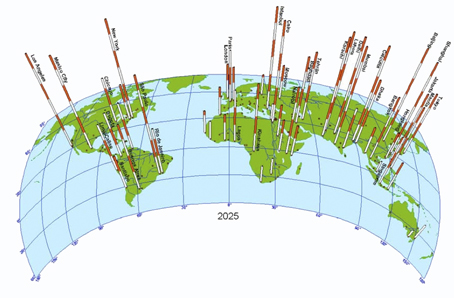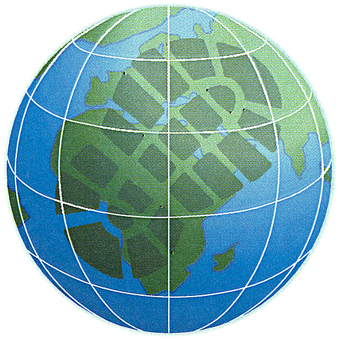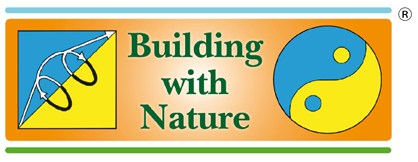As a well-respected specialist in chemical, environmental and civil engineering (Delft University, MIT, Illinois Institute of Technology) Ronald E. Waterman is providing consultancy services to governments and international organisations in more than 50 countries around the world with regard to Coastal Development and Land Reclamation based on the principle of Building with Nature.
Coastal urbanisation
Many civilisations found their origin and were often developed in the border zone land-water, in coastal and deltaic regions. Therefore, it is not a surprise that at the beginning of the 21st century, around 80 % of the largest population centres in the world is found in coastal areas.

Striking examples of coastal urbanisation can be found in nearly all continents, such as Tokyo-Kawasaki-Yokohama, Osaka-Kobe, Seoul-Inchon, Pusan, Shanghai, Hong Kong, Guangzhou, Taipei, Kaohsiung, Manila, Jakarta, Mumbai, Calcutta, Chennai, Karachi, Dhaka, Bangkok, Singapore, Sydney, Rio de Janeiro, Buenos Aires, Caracas, Lima-Callao, Montevideo, New York, Los Angeles-Long Beach, San Francisco, Vancouver, Alexandria-Cairo, Lagos, Cape Town, Istanbul, Saint Petersburg, London, Randstad Holland.
In these densely populated coastal and deltaic areas there are many existing and future problems in need of solutions, but also with challenging opportunities to create added value. In all areas mentioned there is only little space available for living, working, transport and recreation, while at the same time there is the need to preserve or even enlarge natural coastal and deltaic habitats.
In addition to space issues safety problems caused by climate change should be dealt with. Sea level rise, the high intensity and frequency of storm surgers, salt water intrusion in the existing hinterland and land subsidence demand adequate actions in order to minimize the effects of these life-threatening developments. This also applies to the existing hinterland, where higher frequencies of intensive rain with periods of extreme draught in between, in combination with quick surface water run-off to the rivers caused by hard surface conditions, are challenging factors to be taken into account.
Space + Economy + Environment: sustainability first
The biggest challege of the 21st century is the development and implementation of methods that at the same time strengthen the economy and improve the environment, while making optimum use of the available space. In addition sustainability of production and consumption processes should be strived for in coastal zone areas. This is crucial in achieving a minimal global footprint. The environmental footprint can be regarded as a function of population size, lifestyles and technology.

Building with Nature®
In terms of SPACE, there are three solutions, according to Waterman:
A. Better utilisation of the third dimension (i.e. up, down) and multiple land uses.
B. Exploit opportunities in the existing hinterland; in the case of the Randstad, this is the Blue Green Heart.
C. The seaward option.
In practice, all over the world these three options are often applied in combination, with an in-depth focus on safety and integrated water management.
Aquapuncture©
In addition to Building with Nature, Aquapuncture© is of great significance in this context. This science focuses on the optimal use, adaptation and management of inland waterways (rivers, canals, lakes) and their waterfronts for safety, water storage, water level regulation, water quality, navigability, economy, employment and living environment, in such a way as to ensure environmental quality.
Infrastructure
Regarding ECONOMY and ENVIRONMENT, adequate infrastructure for the transport of people, goods and information is an absolute necessity - like the circulatory and nervous system of a human body - with attention to all modes of transport, separately and interrelated. The development and introduction of methods that simultaneously strengthen the economy and improve the environment are highly preferred.

